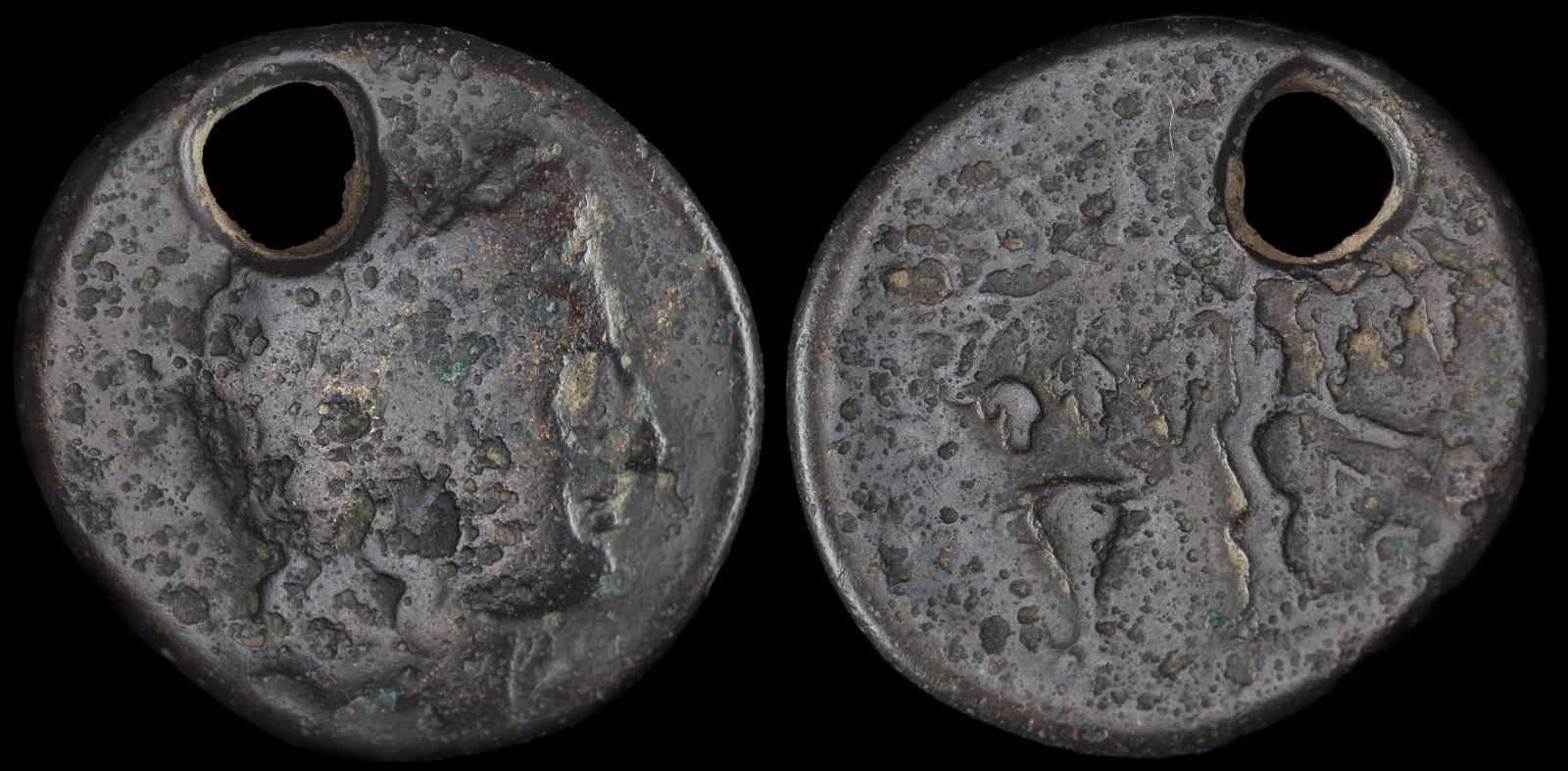Holed
View All Tags
From a practical standpoint, the hole made it easier for coins to be strung together, facilitating the transportation and organization of large sums of money. Merchants and traders could thread the coins onto strings or rods, creating manageable bundles that were easy to carry. This was particularly important in an ancient economy where coins, especially in large quantities, could be cumbersome to transport without a way to keep them together. Additionally, the hole allowed for the use of coins in various applications, including jewelry and ceremonial items, by passing cords or threads through them.
Symbolically, the square hole in Chinese coins has strong ties to Daoist cosmology. In ancient Chinese philosophy, the square hole represented the earth, symbolizing the material and finite world, while the round shape of the coin itself symbolized the heavens or the celestial sphere, representing the infinite and spiritual realm. This contrast between the square hole and the round shape of the coin reflects the harmony between heaven and earth, a central tenet of Daoism. The design was thought to reflect the balance and interconnectedness of the physical and spiritual realms.

Eurymenai, Thessaly 352-344 BCE
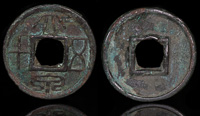
Wang Mang 7-23 CE
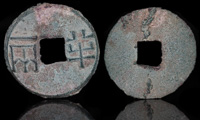
Western Han Dynasty 180-87 BCE
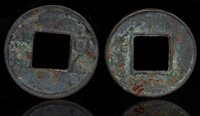
Wu Di 118-113 BCE
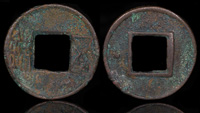
Zhang Di 75-88 CE
